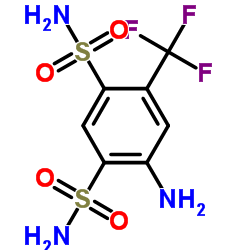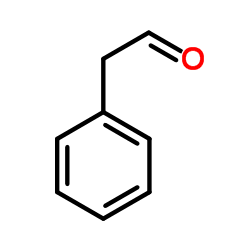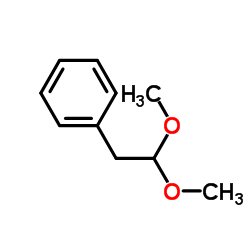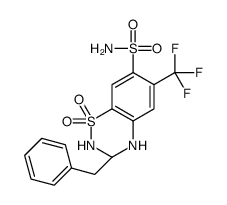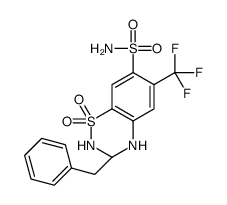73-48-3
| 中文名 | 苄氟噻嗪 |
|---|---|
| 英文名 | bendroflumethiazide |
| 中文别名 |
3-苄基-3,4-二氢-6-(三氟甲基)-2H-1,2,4-苯并噻二嗪-7-磺酰胺-1,1-二氧化物
3-苄基-3,二氢-6-(三氟甲基)-2H-1,2,4-苯并噻二嗪-7-氨基磺酰-1,1-二氧化物 |
| 英文别名 |
2H-1,2,4-Benzothiadiazine-7-sulfonamide, 3,4-dihydro-3-(phenylmethyl)-6-(trifluoromethyl)-, 1,1-dioxide
Pluryl benzoflumethiazide 3-Benzyl-6-(trifluorométhyl)-3,4-dihydro-2H-1,2,4-benzothiadiazine-7-sulfonamide-1,1-dioxyde Bendrofluazide 3-benzyl-1,1-dioxo-6-(trifluoromethyl)-3,4-dihydro-2H-1λ<sup>6</sup>,2,4-benzothiadiazine-7-sulfonamide Naturetin 3,4-Dihydro-3-(phenylmethyl)-6-(trifluoromethyl)-2H-1,2,4-benzothiadiazine-7-sulfonamide 1,1-dioxide 3-Benzyl-3,4-dihydro-7-sulfamyl-6-trifluoromethyl-1,2,4-benzothiadiazine 1,1-Dioxide 3-Benzyl-6-(trifluoromethyl)-3,4-dihydro-2H-1,2,4-benzothiadiazine-7-sulfonamide 1,1-dioxide Benzydroflumethiazide Centyl Benzylrodiuran Berkozide bendroflumethiazide bendroflumethazide Neo-naclex Naturine 3-(Phenylmethyl)-6-(trifluoromethyl)-3,4-dihydro-2H-1,2,4-benzothiadiazine-7-sulfonamide 1,1-dioxide bendroflumetazide Aprinox T66 BSWM EM DHJ D1R& HXFFF ISZW Salures |
| 描述 | 苯卓氟甲肼是一种口服利尿剂。苯卓氟甲基噻嗪是一种抗高血压药物。苯卓氟甲基噻嗪在动脉性高血压疾病的研究中具有潜力[1]。 |
|---|---|
| 相关类别 | |
| 参考文献 |
| 密度 | 1.5±0.1 g/cm3 |
|---|---|
| 沸点 | 602.1±65.0 °C at 760 mmHg |
| 熔点 | 205-207ºC |
| 分子式 | C15H14F3N3O4S2 |
| 分子量 | 421.415 |
| 闪点 | 318.0±34.3 °C |
| 精确质量 | 421.037781 |
| PSA | 135.12000 |
| LogP | 2.07 |
| 外观性状 | 白色固体 |
| 蒸汽压 | 0.0±1.7 mmHg at 25°C |
| 折射率 | 1.584 |
| 储存条件 | 通风低温干燥 |
| 水溶解性 | Practically insoluble in water, freely soluble in acetone, soluble in ethanol (96 per cent). |
|
Section1. IDENTIFICATION OF THE SUBSTANCE/MIXTURE Product identifiers Product name: Bendroflumethiazide CAS-No.: 73-48-3 Relevant identified uses of the substance or mixture and uses advised against Identified uses: Laboratory chemicals, Manufacture of substances Section2. HAZARDS IDENTIFICATION Classification of the substance or mixture Not a hazardous substance or mixture according to Regulation (EC) No. 1272/2008. This substance is not classified as dangerous according to Directive 67/548/EEC. Label elements The product does not need to be labelled in accordance with EC directives or respective national laws. Other hazards - none Section3. COMPOSITION/INFORMATION ON INGREDIENTS Substances Synonyms: 3-Benzyl-6-trifluoromethyl-7-sulfamoyl-3,4-dihydro-2H-1,2,4- benzothiadiazine 1,1-dioxide Formula: C15H14F3N3O4S2 Molecular Weight: 421,41 g/mol Section4. FIRST AID MEASURES Description of first aid measures If inhaled If breathed in, move person into fresh air. If not breathing, give artificial respiration. In case of skin contact Wash off with soap and plenty of water. In case of eye contact Flush eyes with water as a precaution. If swallowed Never give anything by mouth to an unconscious person. Rinse mouth with water. Most important symptoms and effects, both acute and delayed Indication of any immediate medical attention and special treatment needed no data available Section5. FIREFIGHTING MEASURES Extinguishing media Suitable extinguishing media Use water spray, alcohol-resistant foam, dry chemical or carbon dioxide. Special hazards arising from the substance or mixture Carbon oxides, nitrogen oxides (NOx), Sulphur oxides, Hydrogen fluoride Advice for firefighters Wear self contained breathing apparatus for fire fighting if necessary. Further information no data available Section6. ACCIDENTAL RELEASE MEASURES Personal precautions, protective equipment and emergency procedures Avoid dust formation. Avoid breathing vapors, mist or gas. Environmental precautions Do not let product enter drains. Methods and materials for containment and cleaning up Sweep up and shovel. Keep in suitable, closed containers for disposal. Reference to other sections For disposal see section 13. Section7. HANDLING AND STORAGE Precautions for safe handling Provide appropriate exhaust ventilation at places where dust is formed.Normal measures for preventive fire protection. Conditions for safe storage, including any incompatibilities Store in cool place. Keep container tightly closed in a dry and well-ventilated place. Specific end uses no data available Section8. EXPOSURE CONTROLS/PERSONAL PROTECTION Control parameters Components with workplace control parameters Exposure controls Appropriate engineering controls General industrial hygiene practice. Personal protective equipment Eye/face protection Use equipment for eye protection tested and approved under appropriate government standards such as NIOSH (US) or EN 166(EU). Skin protection Handle with gloves. Gloves must be inspected prior to use. Use proper glove removal technique (without touching glove's outer surface) to avoid skin contact with this product. Dispose of contaminated gloves after use in accordance with applicable laws and good laboratory practices. Wash and dry hands. The selected protective gloves have to satisfy the specifications of EU Directive 89/686/EEC and the standard EN 374 derived from it. Body Protection Choose body protection in relation to its type, to the concentration and amount of dangerous substances, and to the specific work-place., The type of protective equipment must be selected according to the concentration and amount of the dangerous substance at the specific workplace. Respiratory protection Respiratory protection is not required. Where protection from nuisance levels of dusts are desired, use type N95 (US) or type P1 (EN 143) dust masks. Use respirators and components tested and approved under appropriate government standards such as NIOSH (US) or CEN (EU). Section9. PHYSICAL AND CHEMICAL PROPERTIES Information on basic physical and chemical properties a) AppearanceForm: solid b) Odourno data available c) Odour Thresholdno data available d) pHno data available e) Melting point/freezingno data available point f) Initial boiling point and no data available boiling range g) Flash pointno data available h) Evaporation rateno data available i) Flammability (solid, gas) no data available j) Upper/lowerno data available flammability or explosive limits k) Vapour pressureno data available l) Vapour densityno data available m) Relative densityno data available n) Water solubilityno data available o) Partition coefficient: n- no data available octanol/water p) Autoignitionno data available temperature q) Decompositionno data available temperature r) Viscosityno data available s) Explosive propertiesno data available t) Oxidizing propertiesno data available Other safety information no data available Section10. STABILITY AND REACTIVITY Reactivity no data available Chemical stability no data available Possibility of hazardous reactions no data available Conditions to avoid no data available Incompatible materials no data available Hazardous decomposition products Other decomposition products - no data available Section11. TOXICOLOGICAL INFORMATION Information on toxicological effects Acute toxicity LD50 Oral - mouse - > 10.000 mg/kg Skin corrosion/irritation no data available Serious eye damage/eye irritation no data available Respiratory or skin sensitization no data available Germ cell mutagenicity Genotoxicity in vitro - Hamster - Lungs Cytogenetic analysis Carcinogenicity IARC:No component of this product present at levels greater than or equal to 0.1% is identified as probable, possible or confirmed human carcinogen by IARC. Reproductive toxicity no data available Specific target organ toxicity - single exposure no data available Specific target organ toxicity - repeated exposure no data available Aspiration hazard no data available Potential health effects InhalationMay be harmful if inhaled. May cause respiratory tract irritation. IngestionMay be harmful if swallowed. SkinMay be harmful if absorbed through skin. May cause skin irritation. EyesMay cause eye irritation. Additional Information RTECS: DK8225000 Section12. ECOLOGICAL INFORMATION Toxicity no data available Persistence and degradability no data available Bioaccumulative potential no data available Mobility in soil no data available Results of PBT and vPvB assessment no data available Other adverse effects no data available Section13. DISPOSAL CONSIDERATIONS Waste treatment methods Product Offer surplus and non-recyclable solutions to a licensed disposal company. Contaminated packaging Dispose of as unused product. Section14. TRANSPORT INFORMATION UN number ADR/RID: -IMDG: -IATA: - UN proper shipping name ADR/RID: Not dangerous goods IMDG: Not dangerous goods IATA:Not dangerous goods Transport hazard class(es) ADR/RID: -IMDG: -IATA: - Packaging group ADR/RID: -IMDG: -IATA: - Environmental hazards ADR/RID: noIMDG Marine pollutant: noIATA: no Special precautions for user no data available SECTION 15 - REGULATORY INFORMATION N/A SECTION 16 - ADDITIONAL INFORMATION N/A |
CHEMICAL IDENTIFICATION
HEALTH HAZARD DATAACUTE TOXICITY DATA
MUTATION DATA
|
| 个人防护装备 | Eyeshields;Gloves;type N95 (US);type P1 (EN143) respirator filter |
|---|---|
| 危险品运输编码 | NONH for all modes of transport |
| WGK德国 | 2 |
| RTECS号 | DK8225000 |
|
~% 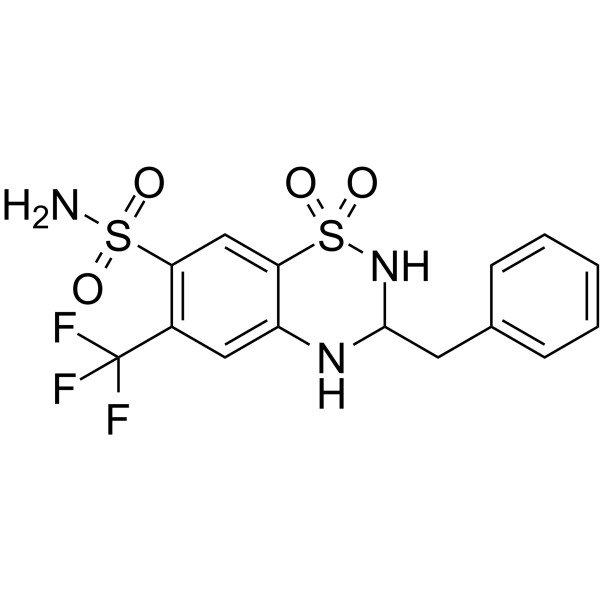
73-48-3 |
| 文献:Journal of Organic Chemistry, , vol. 26, p. 3842 - 3850 |
|
~% 
73-48-3 |
| 文献:Bollettino Chimico Farmaceutico, , vol. 100, p. 956 - 971 |
| 上游产品 3 | |
|---|---|
| 下游产品 3 | |


